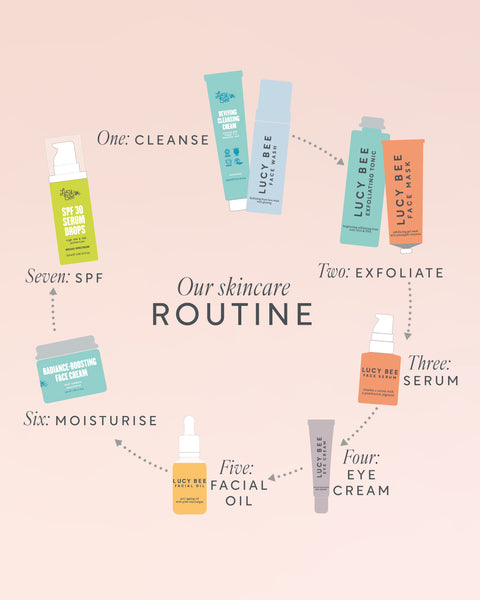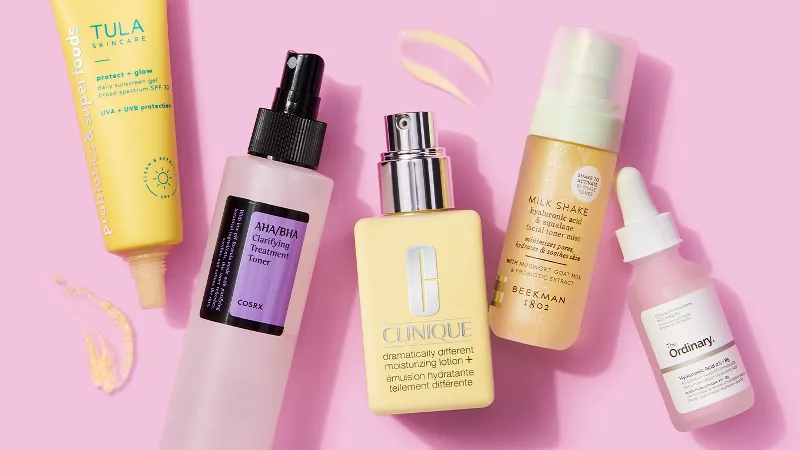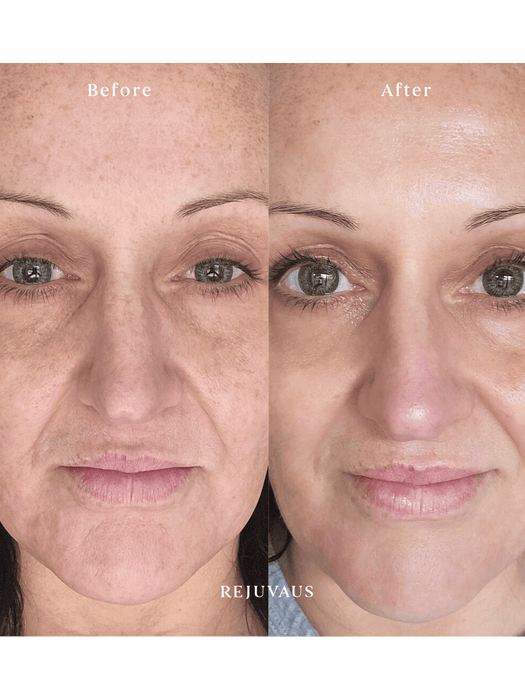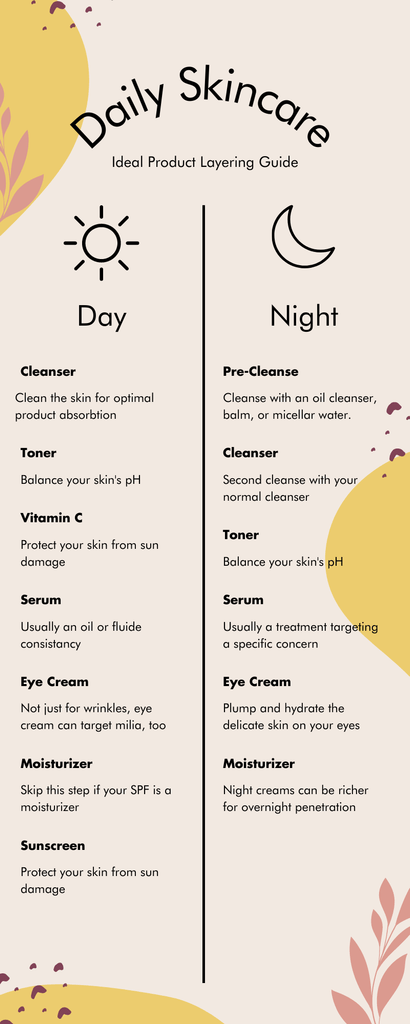Imagine waking up to skin that feels as fresh and rejuvenated as a new day. The secret?
It’s all in the magic of an AHA skincare routine. If you’re tired of battling dullness or uneven skin texture, you’re in for a treat. AHA, or Alpha Hydroxy Acid, is the skincare powerhouse that can transform your complexion from lackluster to luminous.
But how do you incorporate AHAs into your routine without overwhelming your skin? That’s exactly what we’re diving into. In this guide, you’ll discover how to harness the full potential of AHA, ensuring your skin not only looks but feels incredible. Ready to unlock your skin’s natural glow? Let’s get started!

Credit: www.reddit.com
Benefits Of Aha In Skincare
Alpha Hydroxy Acids (AHAs) are popular in skincare for their ability to improve skin texture and appearance. They gently remove dead skin cells, revealing fresher skin underneath. AHAs also help brighten dull skin and even out skin tone. Regular use can lead to smoother, softer, and more radiant skin.
How Ahas Work On Skin
AHAs dissolve the bonds between dead skin cells. This action allows the old cells to shed more easily. The process encourages the growth of new, healthy skin cells. AHAs also boost collagen production, which helps keep skin firm. They improve moisture retention, making skin feel hydrated.
Types Of Ahas To Know
- Glycolic Acid: Derived from sugar cane, it has the smallest molecules for deep skin penetration.
- Lactic Acid: Made from milk, it is gentle and good for sensitive skin.
- Citric Acid: Comes from citrus fruits, it brightens skin and balances pH levels.
- Mandelic Acid: Extracted from almonds, it is mild and good for acne-prone skin.
Visible Results From Regular Use
Skin looks brighter and more even in tone. Fine lines and wrinkles appear softer. Texture feels smoother and less rough. Pores become less visible and clogged pores clear out. Skin gains a healthy glow and feels firmer.
Choosing The Right Aha Product
Choosing the right AHA product is key to seeing real benefits from your skincare routine. It’s not just about picking any acid-based product but finding one that suits your skin’s unique needs. Your choice can make the difference between glowing skin and irritation, so understanding what to look for is essential.
Selecting Based On Skin Type
Different skin types react differently to AHAs. If you have dry or sensitive skin, you might want to start with a lower concentration of glycolic or lactic acid to avoid redness or peeling.
Oily and acne-prone skin often benefits from stronger AHAs like glycolic acid, which helps unclog pores and reduce excess oil. Combination skin might need a balanced formula that targets specific areas without over-drying others.
Ask yourself: How does your skin usually react to new products? This can guide you toward the right strength and type of AHA.
Formulations To Consider
AHAs come in many forms, including cleansers, toners, serums, and creams. Each offers different levels of exfoliation and hydration.
Serums tend to have higher concentrations and provide deeper exfoliation, but they might be too strong for beginners. Creams or lotions with AHAs are usually gentler and also add moisture.
Think about your daily routine and how much time you want to spend on application. A toner with AHA might be easier for quick use, while a serum can be part of a targeted treatment.
Avoiding Common Irritants
Some AHA products contain added fragrances, alcohol, or harsh preservatives that can irritate your skin. These ingredients often cause dryness or allergic reactions, especially when combined with acids.
Look for products labeled as fragrance-free and suitable for sensitive skin. Also, avoid mixing AHAs with other strong actives like retinol or benzoyl peroxide without professional advice.
Have you noticed redness or stinging after using certain products? This might be a sign to check the ingredient list more carefully before continuing.
Step-by-step Aha Routine
AHA (Alpha Hydroxy Acid) skincare routines help exfoliate dead skin cells gently. This process reveals fresh, glowing skin underneath. Following a clear routine ensures your skin benefits fully from AHA products. Proper steps also reduce irritation and dryness. Here is a simple guide to follow for best results.
Cleansing For Maximum Absorption
Start with a gentle cleanser to remove dirt and oil. Clean skin allows AHA products to work better. Use lukewarm water to avoid drying your skin. Pat your face dry with a soft towel. Avoid harsh scrubs before applying AHA, as they can irritate.
Applying Aha Products Correctly
Apply a small amount of AHA product evenly on your face. Use your fingertips to spread it gently. Avoid the eye area to prevent sensitivity. Let the product absorb fully before applying other products. Start using AHA products two or three times a week. Increase frequency slowly as your skin adjusts.
Moisturizing And Protecting Skin
Use a moisturizer to soothe and hydrate after applying AHA. Choose one that suits your skin type to avoid clogging pores. Always apply sunscreen during the day. AHA makes skin more sensitive to sunlight. Protect your skin to prevent damage and dark spots.
Timing And Frequency Tips
Knowing the right timing and how often to use AHA products can improve your skin’s health. Too much use can cause irritation. Too little might not bring the benefits you want. Follow simple tips to find a good balance for your skin.
How Often To Use Ahas
Start with a low frequency, about two times a week. Watch how your skin reacts. Increase use slowly if your skin feels comfortable. Many people find daily use works well after a few weeks. Sensitive skin types should stay at two to three times weekly.
Best Times Of Day For Application
Apply AHAs in the evening to avoid sun sensitivity. Nighttime use lets the acids work while you sleep. Always follow with a moisturizer to protect your skin. Use sunscreen the next day to prevent sun damage. Avoid using AHAs right before sun exposure.
Adjusting Routine For Sensitivity
Stop using AHAs if redness or burning occurs. Give your skin time to heal before trying again. Use milder products with lower acid levels if needed. Mix AHAs with calming ingredients like aloe or hyaluronic acid. Patch test new products on a small skin area first.
Combining Ahas With Other Ingredients
Combining AHAs with other skincare ingredients can enhance your routine. The right pairs improve skin texture and hydration. The wrong mixes may cause irritation or reduce effectiveness. Understanding safe combinations keeps skin healthy and glowing. Follow simple guidelines to maximize benefits from AHAs.
Safe Ingredient Pairings
- Hyaluronic acid: Hydrates skin and balances AHAs’ exfoliation.
- Niacinamide: Calms skin and reduces redness.
- Vitamin C: Brightens skin but use at different times to avoid irritation.
- Peptides: Support skin repair and firmness.
- Ceramides: Strengthen skin barrier alongside AHAs.
Ingredients To Avoid With Ahas
- Retinol: Both are strong; can cause irritation together.
- Benzoyl peroxide: May dry and irritate skin when combined.
- Other acids: Using multiple acids increases risk of sensitivity.
- Physical exfoliants: Can damage skin barrier when paired with AHAs.
Boosting Results With Complementary Products
Use a gentle cleanser before applying AHAs. Follow with a moisturizer to soothe skin. Sunscreen is essential daily to protect from sun damage. Incorporate calming serums to reduce inflammation. Consistent routine improves skin tone and texture over time.
Common Mistakes To Avoid
Using AHA in your skincare routine can transform your skin, but some common mistakes might hold you back or even cause damage. Knowing what to avoid helps you get the best results without irritation or setbacks.
Overuse And Skin Irritation
AHA exfoliates the skin by removing dead cells, but using it too often can strip your skin’s natural oils. This often leads to redness, dryness, and irritation.
I once applied an AHA product every night, hoping for faster results. Instead, my skin became sensitive and flaky, forcing me to pause and let it heal.
Start slowly—use AHA 2-3 times a week and watch how your skin reacts. Your skin needs time to adjust, so less is more.
Ignoring Sun Protection
AHA makes your skin more sensitive to sunlight, increasing the risk of sunburn and damage. Skipping sunscreen can undo all the good your routine does.
Always apply a broad-spectrum SPF of at least 30 during the day, even when it’s cloudy. Think about this: why spend time improving your skin if you don’t protect it afterward?
If you forget sunscreen, your skin might burn or develop dark spots, negating the benefits of your exfoliation.
Skipping Patch Tests
Jumping straight into full-face application without a patch test is risky. Everyone’s skin reacts differently to AHA, so testing a small area first prevents surprises.
Try applying a small amount on your wrist or behind your ear and wait 24 hours. No redness or itching? You’re good to go.
Patch testing saves you from unnecessary irritation and ensures your skin can handle the product safely.
Long-term Skin Transformation
Long-term use of AHA skincare products can bring visible and lasting changes. These acids gently remove dead skin cells. This process reveals fresh, smoother skin underneath. Over time, skin texture improves, and fine lines reduce. Consistent care with AHAs leads to a clearer, brighter complexion.
Tracking Progress Over Weeks
Observe your skin closely each week. Take photos under the same light and angle. Notice changes in texture, brightness, and smoothness. Pay attention to any irritation or dryness. Keep a simple journal to record daily skin feelings and product use. This helps identify what works best for your skin type.
Adjusting Routine As Skin Changes
Skin adapts over time. Adjust the amount of AHA based on tolerance. Increase use slowly if skin handles it well. Reduce frequency if redness or peeling occurs. Add moisturizing products to soothe and protect skin. Switch to milder formulas during sensitive phases or weather changes.
Maintaining Healthy Skin Post-aha
Continue using sunscreen daily to protect new skin cells. Hydrate skin with gentle moisturizers to keep it balanced. Avoid harsh scrubs or over-exfoliating that can harm skin. Keep a steady routine to support skin’s natural barrier. Healthy habits help keep skin glowing long after AHA use.
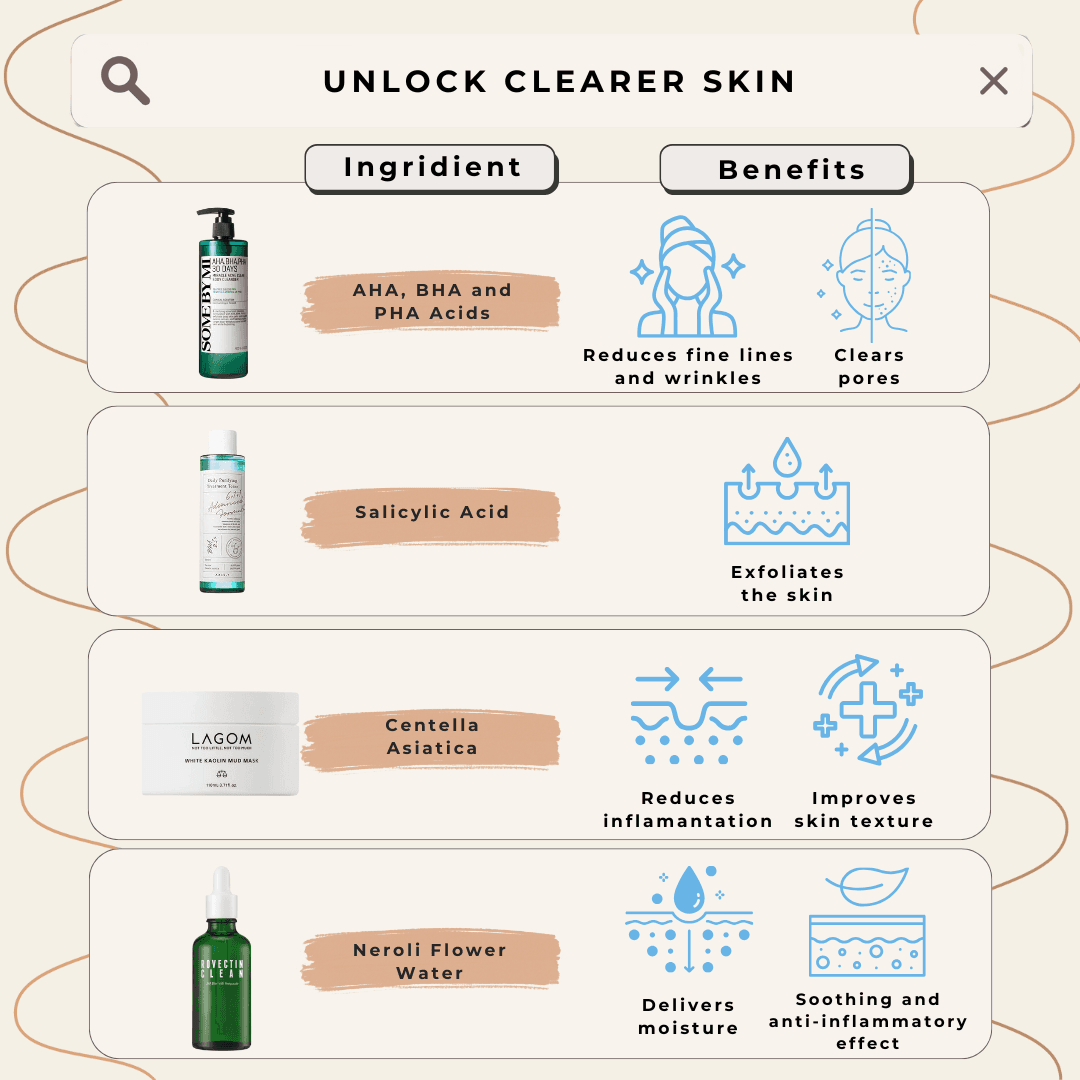
Credit: skinsider.co.uk

Credit: www.victoriandermalgroup.com.au
Frequently Asked Questions
What Is The Best Time To Use Aha In Skincare Routine?
Use AHA products at night for optimal skin renewal. Sun sensitivity increases with AHA use. Always apply sunscreen during the day to protect your skin after AHA application.
How Often Should I Apply Aha Skincare Products?
Start by using AHA products 2-3 times a week. Gradually increase frequency based on skin tolerance. Overuse can cause irritation and dryness, so monitor your skin carefully.
Can Aha Help With Acne And Skin Texture?
Yes, AHA exfoliates dead skin cells and unclogs pores. This helps reduce acne and smooths rough texture. Regular use promotes clearer, brighter, and healthier skin over time.
Are Aha Products Suitable For Sensitive Skin?
Sensitive skin can benefit from mild AHA formulas. Start with low concentrations and patch test first. If irritation occurs, reduce use or consult a dermatologist for advice.
Conclusion
Aha skincare routines help keep skin smooth and fresh. Use products with AHAs gently and regularly. Always apply sunscreen to protect your skin after use. Small steps each day bring better skin health. Stay consistent, and you will see improvement soon.
Healthy skin feels good and boosts confidence. Try adding AHAs carefully to your daily care. Your skin will thank you with a clear, bright look. Simple habits make a big difference over time. Keep your routine easy and enjoy the results.
